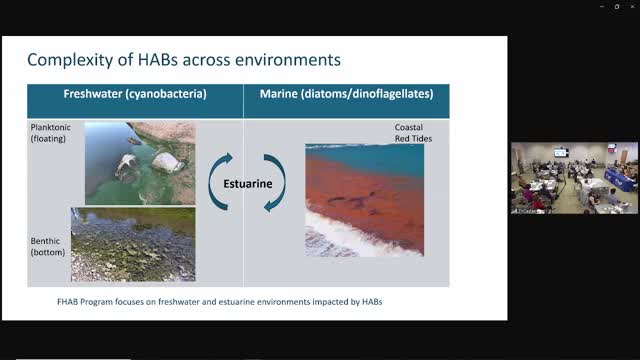California officials address risks of harmful algal blooms to public health and recreation
May 07, 2025 | State Water Resources Control Board, Boards and Commissions, Executive, California
Thanks to Scribe from Workplace AI and Family Portal , all articles about California are free for you to enjoy throughout 2025!

This article was created by AI using a video recording of the meeting. It summarizes the key points discussed, but for full details and context, please refer to the video of the full meeting. Link to Full Meeting
One of the key points raised was the complexity of monitoring and responding to HABs. The committee highlighted that current monitoring efforts are largely reactionary, with limited resources available for proactive measures. This reactive approach often leaves communities vulnerable to the risks associated with these blooms, which can affect both human health and wildlife. The discussion emphasized the need for improved data collection and monitoring to better understand the extent of the problem and its implications for California's vast population of over 40 million residents.
A significant focus of the meeting was on the various beneficial uses of water that could be impacted by HABs. Officials noted that recreational water activities, particularly non-contact recreation, are among the most common uses in California. With millions of visitors engaging in these activities each year, the potential risks posed by harmful algal blooms are a pressing concern. The committee underscored the importance of protecting these uses, not just for the sake of wildlife, but for the societal benefits they provide to communities.
The conversation also touched on the need for effective risk communication strategies. As officials work to inform the public about potential hazards, they face the challenge of limited resources and the necessity of timely responses to suspected algal bloom events. The committee acknowledged that while they have made strides in establishing a monitoring program, the current system remains underfunded and stretched thin.
As the meeting concluded, the urgency of the discussions lingered in the air. The committee's commitment to addressing the challenges posed by harmful algal blooms reflects a broader recognition of the need for enhanced water quality management in California. With the health of both residents and ecosystems at stake, the path forward will require collaboration, increased funding, and a proactive approach to monitoring and communication. The stakes are high, and the call to action is clear: safeguarding California's water resources is essential for the well-being of its communities and the environment.
Converted from Water Quality Coordinating Committee (WQCC) meeting - 5-1-2025 meeting on May 07, 2025
Link to Full Meeting
Comments
View full meeting
This article is based on a recent meeting—watch the full video and explore the complete transcript for deeper insights into the discussion.
View full meeting